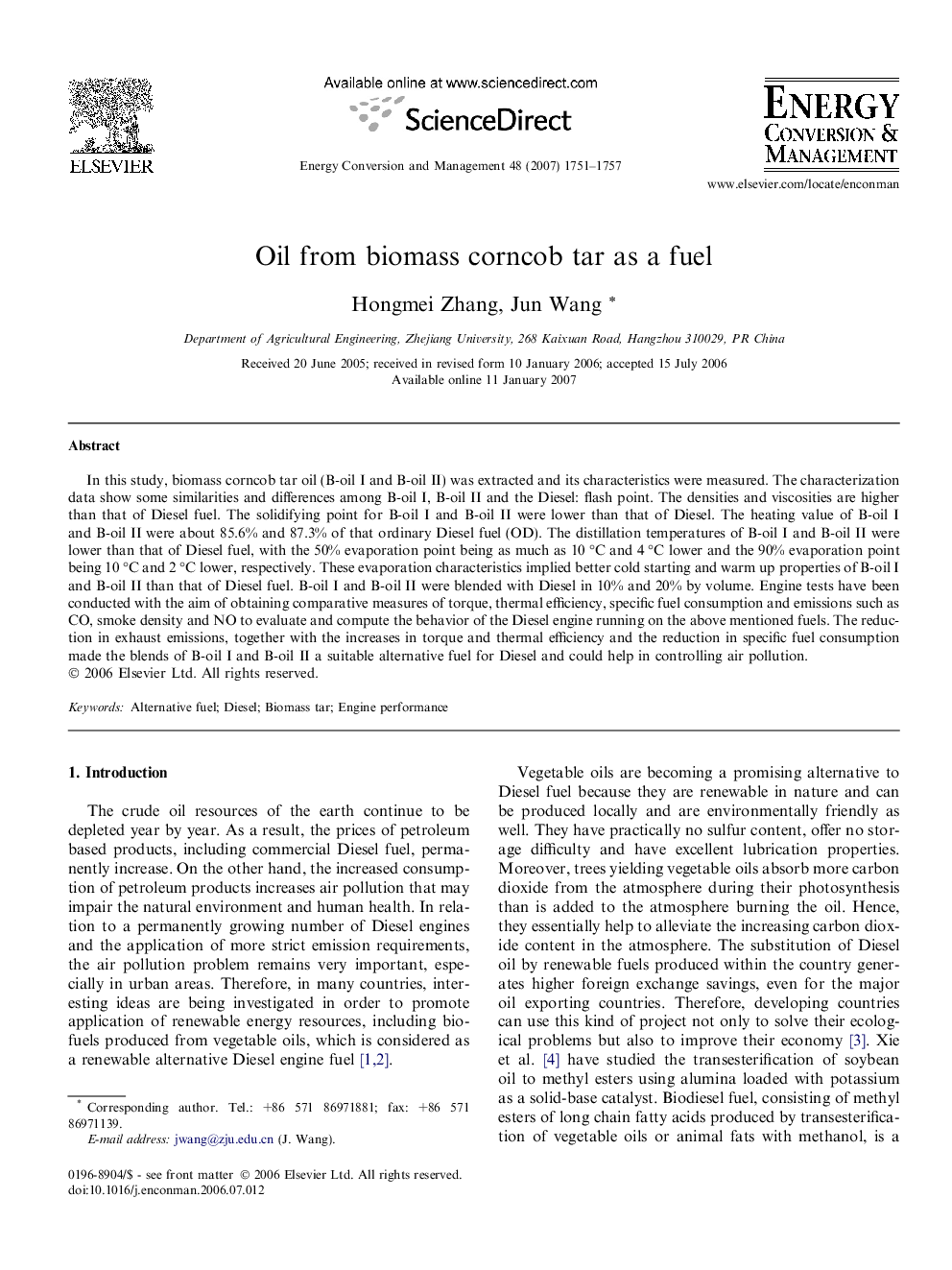| Article ID | Journal | Published Year | Pages | File Type |
|---|---|---|---|---|
| 765437 | Energy Conversion and Management | 2007 | 7 Pages |
In this study, biomass corncob tar oil (B-oil I and B-oil II) was extracted and its characteristics were measured. The characterization data show some similarities and differences among B-oil I, B-oil II and the Diesel: flash point. The densities and viscosities are higher than that of Diesel fuel. The solidifying point for B-oil I and B-oil II were lower than that of Diesel. The heating value of B-oil I and B-oil II were about 85.6% and 87.3% of that ordinary Diesel fuel (OD). The distillation temperatures of B-oil I and B-oil II were lower than that of Diesel fuel, with the 50% evaporation point being as much as 10 °C and 4 °C lower and the 90% evaporation point being 10 °C and 2 °C lower, respectively. These evaporation characteristics implied better cold starting and warm up properties of B-oil I and B-oil II than that of Diesel fuel. B-oil I and B-oil II were blended with Diesel in 10% and 20% by volume. Engine tests have been conducted with the aim of obtaining comparative measures of torque, thermal efficiency, specific fuel consumption and emissions such as CO, smoke density and NO to evaluate and compute the behavior of the Diesel engine running on the above mentioned fuels. The reduction in exhaust emissions, together with the increases in torque and thermal efficiency and the reduction in specific fuel consumption made the blends of B-oil I and B-oil II a suitable alternative fuel for Diesel and could help in controlling air pollution.
